SSM Processing
Each schedule record in the Standard Schedules Information Message or SSIM is processed, stored, or queued as an individual SSM NEW message. The Standard Schedules Message or SSM is processed by the system to create and update a schedule period record for a single flight number.
SSMs can be either in local time mode (LT) or in UTC mode (Coordinated Universal Time). Multiple SSMs can be received by a batch transfer process, but each message is processed individually. Received SSMs can be viewed in .
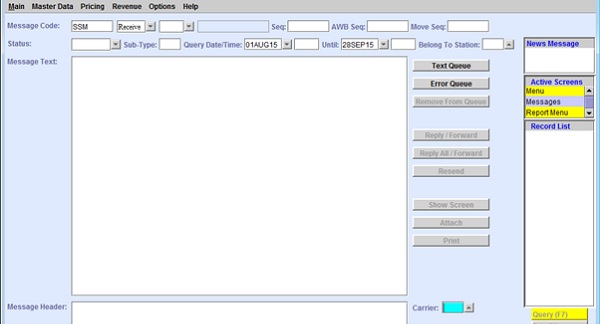
- Carrier
- Flight Number
- From and Until Dates
- Day of week
- Aircraft Type
- Category
- Service Type
- Flight routing and timing
- A stand-alone SSM New message with Message Code SSM and Sub-Type
NEW.

The flight schedule record for XS 3372A is created and can be viewed in .
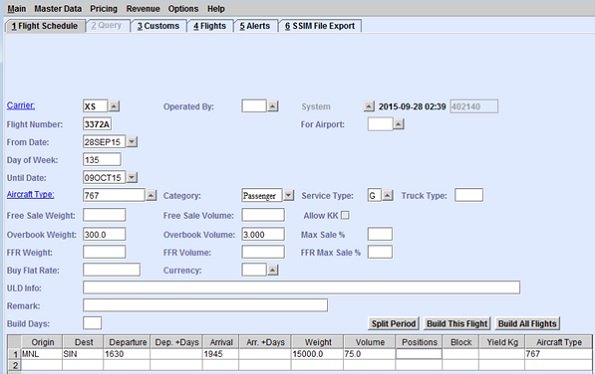
- An SSM from SSIM, with Message Code SSM and Sub-Type
SIM.

The flight schedule record for XS 5739 is created and can be viewed in . Times are converted from UTC to the appropriate local times at each station in the routing.
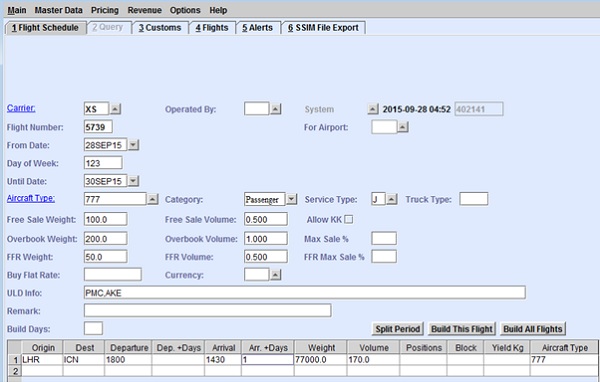
-
An SSM NEW is sent in UTC for a flight schedule with departure time from SIN at 20:00 and arrival time MNL at 23:00, on Days 1, 3, and 5.
 When the schedule is created in the system, it shows times in LT or local time which have been converted by the time adjustment factor at each airport. This indicates that the flights are now on Days 2, 4, and 6.
When the schedule is created in the system, it shows times in LT or local time which have been converted by the time adjustment factor at each airport. This indicates that the flights are now on Days 2, 4, and 6.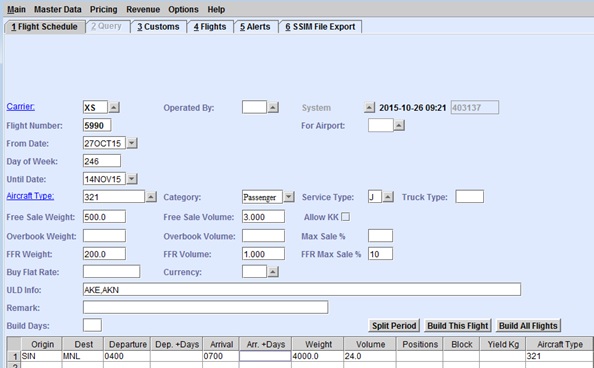 The difference between a flight schedule created from an SSM and a manually created schedule is with the building of flight records. Flight records are built automatically upon processing of an SSM NEW message. This is applicable for all flights within the current period date window. All the schedules created for flight XS 5990 can be viewed in the Record List pane of the Flights tab.
The difference between a flight schedule created from an SSM and a manually created schedule is with the building of flight records. Flight records are built automatically upon processing of an SSM NEW message. This is applicable for all flights within the current period date window. All the schedules created for flight XS 5990 can be viewed in the Record List pane of the Flights tab.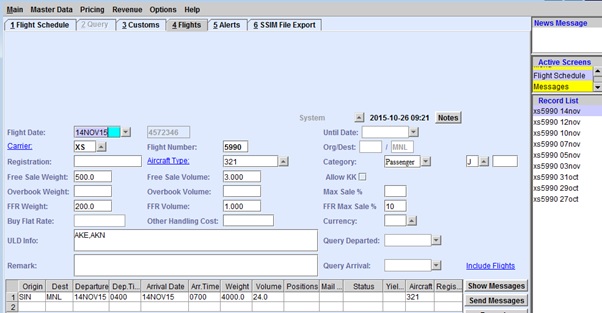
- EQT - Change of equipment details
- RPL - Replacement of existing flight information
- TIM - Change of time information
- CNL - Cancellation of flight schedule
Changes made through SSM update are reflected immediately to existing schedules and flights. If the update applies to flights that are not yet created in the system, the changes are automatically applied after the flights are created.